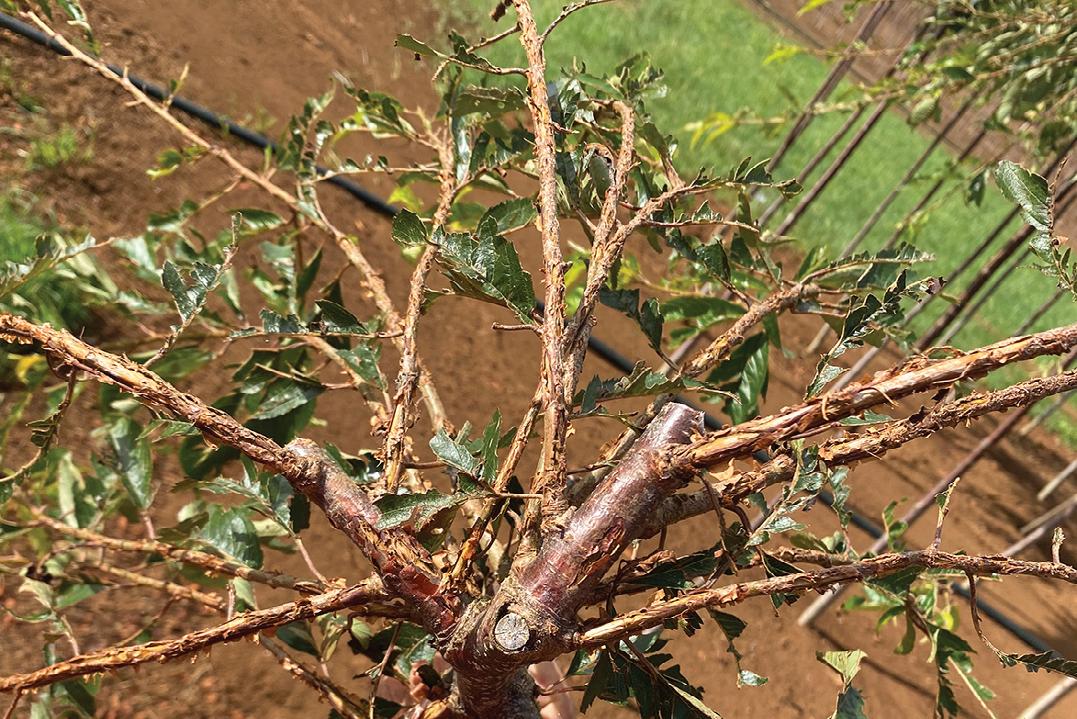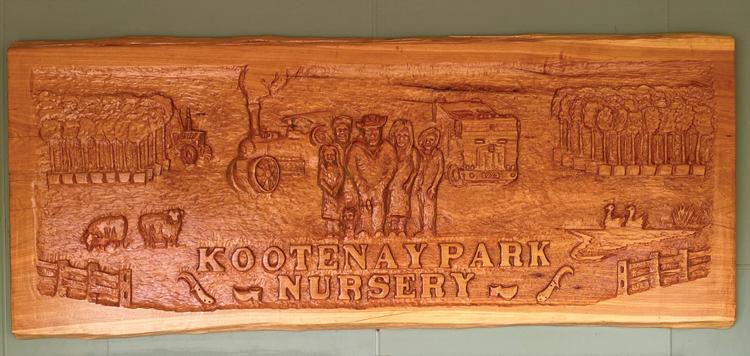
4 minute read
Kootenay Park Nursery soldiers on
By James Nicklen
On Boxing Day 2022, Kootenay Park Nursery was hit by a severe hailstorm that caused significant damage to their stock and site. Large hailstones battered the nursery’s trees, shredding foliage and wounding stems, while the rain that followed flooded the site, washing away topsoil. During the long, painful process of assessing the damage and waiting to see how much of their stock could be saved, the team has remained positive and are soldiering on.
Kootenay Park Nursery, situated in the lush hills of Neerim, Victoria, is a family-owned business that specialises in propagating, growing, and containerising quality ornamental deciduous trees. Established in autumn 2004 by Frank and Andrea Schellekens, who have over 40 years of horticultural experience, the nursery has become known for its expertise in weeping and standardised tree varieties, supplying to a range of retail and wholesale nurseries, along with containerised tree growers and landscapers.
Late last year, the nursery was battered by an intense hailstorm. While it was short in duration, with the sunshine returning within the hour, and its radius was relatively small – a nursery roughly five kilometres away remained untouched – the storm wreaked havoc on Kootenay Park.
Frank says he and some friends were having a casual drink as the storm approached. “We spotted the clouds, and we heard a bit of thunder,” he says. “We saw the sky changing colour and turning that shade of green. At that point we knew what was coming.” As he and his friends did what they could to minimise the damage to vehicles and the site, the swirling storm passed over them. “And sure enough our worst fears were met and down it came,” says Frank.
It wasn’t the first time the nursery had experienced such an event – Kootenay Park endured a similar storm in March 2010. Occurring at a different point in the year, the nursery’s stock was more mature then and able to weather the worst of it more sturdily, but that didn’t stop the hailstones from breaking pots and snapping stakes clean in half around the site. So, they weren’t naive when the storm hit on Boxing Day.
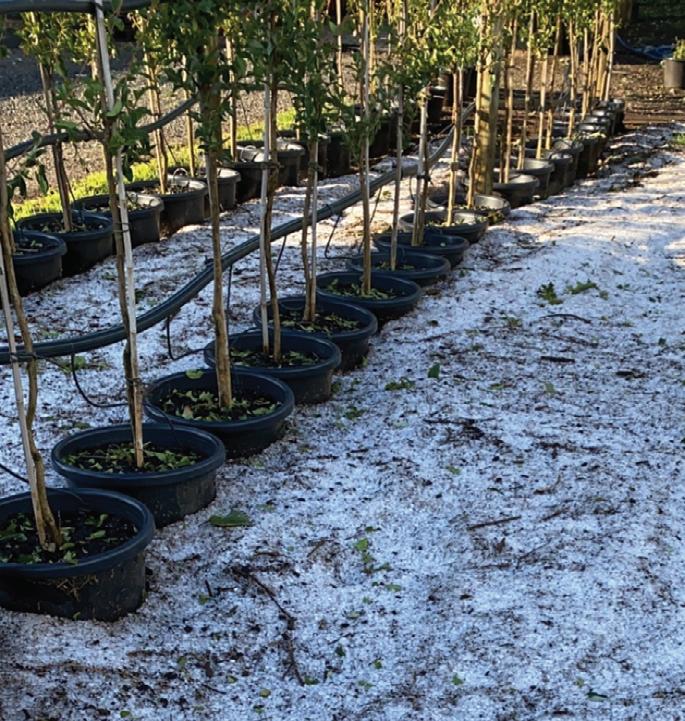
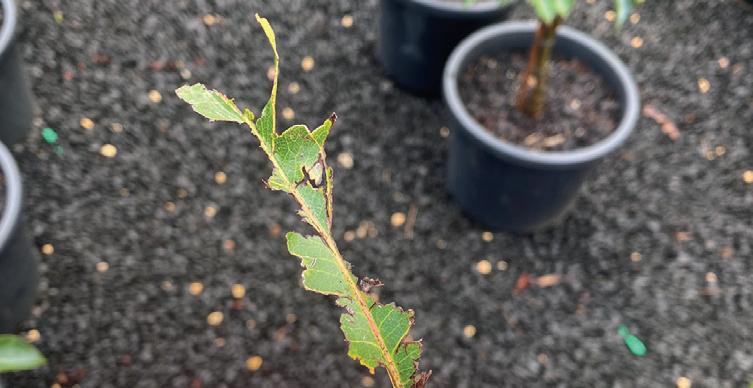
“We were well aware of the damage it could cause,” Frank says. “I had a quick scout, but some of the paddocks I didn’t even need to go into.” He knew how damaged some of the stock was sure to be, and it was a week before he could bring himself to enter some of the paddocks. Many of the trees damaged were beyond repair, their foliage torn to shreds and their stems pocked with gaping wounds and gashes from the impact of the stones. Frank says they were lucky in some respects, and the fact that it was such a short-lived storm (and that it was 36 degrees the very next day) may have prevented the stock succumbing to the diseases that are so often prevalent in hail-damaged stock.
“The beauty of this industry is that we don’t have to go to the casino,” Frank says. “Every morning we wake up, we make decisions, and we gamble – on what we grow and how we grow it – and then when we’re finished making those decisions, Mother Nature can come and give us a king hit from behind anyway. We don’t need to go out and gamble. We put it all on the table every day.”
In the aftermath of the hailstorm, the nursery was forced to downsize its team of staff and put a halt on taking orders until they knew the extent of the damage and the time it would take to be able to send quality stock out the door once again.
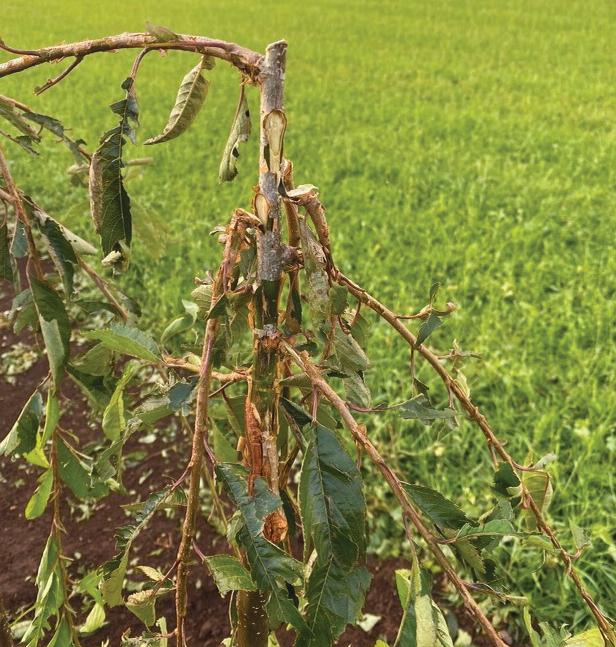
Like so many of their trees did in the weeks and months following the storm, pausing their growth to conserve energy for healing, Kootenay Park itself came to a kind of temporary standstill, with all energy being put towards the recovery effort “It’s been a long and painful process,” says Frank. And he estimates that it may take up to three years for the nursery to fully bounce back to where it was.
With their prior experience of severe storms, Frank knew what to expect regarding customers’ responses and felt well prepared for them. Some customers find it difficult to accept the delays caused by such weather events, but most are more understanding.
“Suppliers like us do their best to supply,” he says. “But there are unforeseen circumstances that we can’t control. Such is life.”
He’s grateful for the support he’s received from individuals in the industry, and in the early months of 2023, it was a source of amusement for Frank and the team to hear some of the rumours of their demise, all of which had been greatly exaggerated. “We heard the rumours we were out of business,” he laughs.
Attending NGIV’s Trade Day in February was a chance to dispel any belief that they might have shut up shop. It was a chance to let the industry know they are still here, and that their commitment to growing excellent quality, robust stock is unwavering, and they are always looking ahead to the future.
Speaking to Andrea, she says the team are relieved that they have had success with their budding so far this year. “We didn’t know how much the sap flow had been affected” , she says. “But it has been the perfect weather for budding – it’s been really successful, so we’ll have some stock ready for next year.” Frank says that most product lines will be back in 2024, while others will be back 2025.
And during this time when less needs to be done to manage stock, it’s given the team a chance to do some work around the nursery that might otherwise have been put on the backburner: new potting mix bunkers, a new shed, and some general improvements around the property. After a painful, uncertain start to the year, things are looking up.
“Everything is better than we were initially thinking,” Andrea says “We’ll soldier on. We’re confident there’s no disease in our stock And if we’re not happy with the quality, it won’t be going out.” Considering everything, she says, “It’s the best outcome we could have had.”
